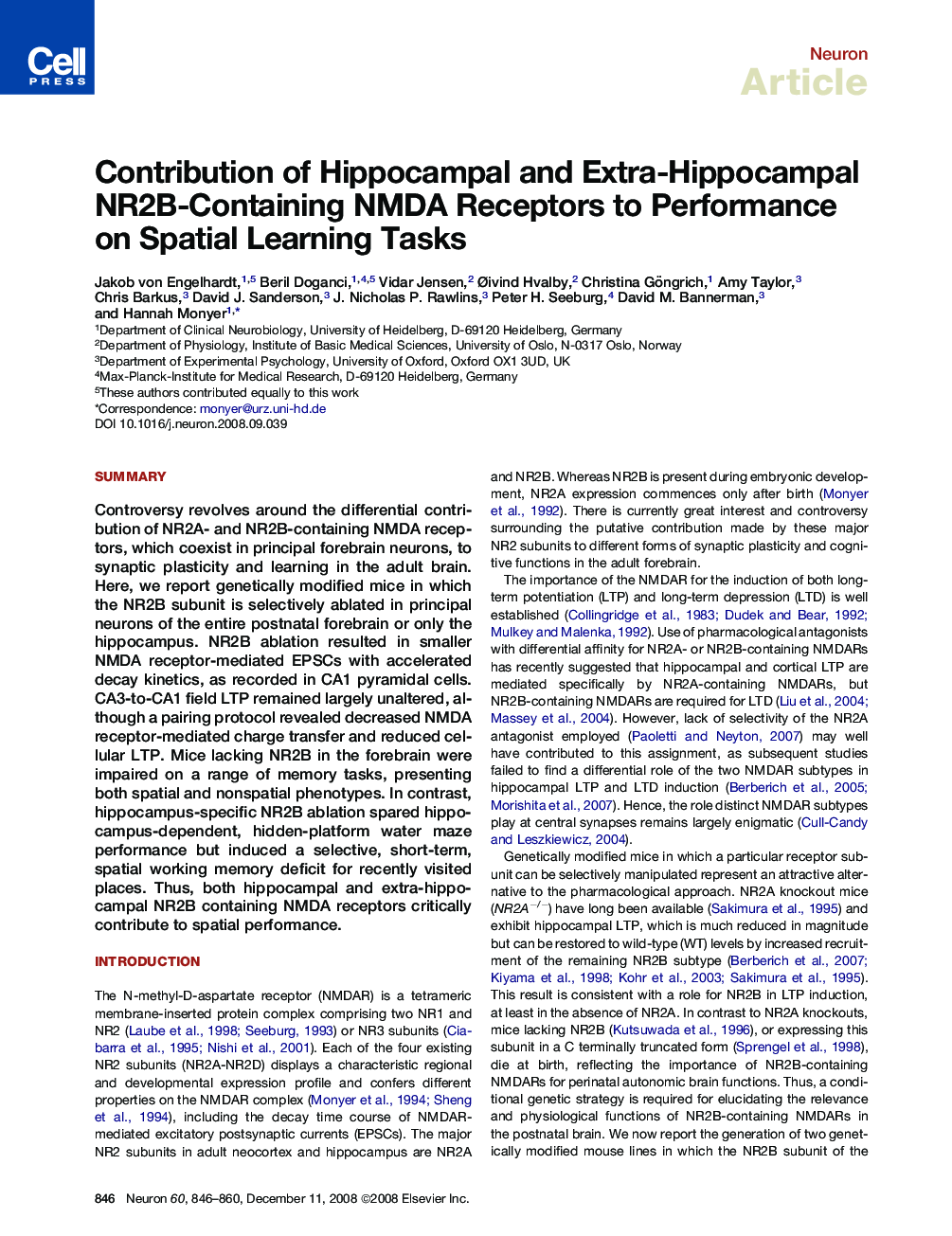| Article ID | Journal | Published Year | Pages | File Type |
|---|---|---|---|---|
| 4322131 | Neuron | 2008 | 15 Pages |
SummaryControversy revolves around the differential contribution of NR2A- and NR2B-containing NMDA receptors, which coexist in principal forebrain neurons, to synaptic plasticity and learning in the adult brain. Here, we report genetically modified mice in which the NR2B subunit is selectively ablated in principal neurons of the entire postnatal forebrain or only the hippocampus. NR2B ablation resulted in smaller NMDA receptor-mediated EPSCs with accelerated decay kinetics, as recorded in CA1 pyramidal cells. CA3-to-CA1 field LTP remained largely unaltered, although a pairing protocol revealed decreased NMDA receptor-mediated charge transfer and reduced cellular LTP. Mice lacking NR2B in the forebrain were impaired on a range of memory tasks, presenting both spatial and nonspatial phenotypes. In contrast, hippocampus-specific NR2B ablation spared hippocampus-dependent, hidden-platform water maze performance but induced a selective, short-term, spatial working memory deficit for recently visited places. Thus, both hippocampal and extra-hippocampal NR2B containing NMDA receptors critically contribute to spatial performance.
